You are using an out of date browser. It may not display this or other websites correctly.
You should upgrade or use an alternative browser.
You should upgrade or use an alternative browser.
Near-Earth objects and close calls
- Thread starter Gawan
- Start date
According to our calculations, on January 21, 2023, the New Moon will be at its closest distance to Earth for the last 992 years.
The next time the New Moon is this close to Earth will be 345 years from now, making this the closest New Moon in 1337 years.
...
We looked into the closest Earth-Moon distances at New Moon over a 2000-year period, and found three New Moons where the distance was less than 356,570 km(221,562 miles).
Our calculations used the best available figures for the Moon’s position over long periods of time. This is a set of data called DE431, which was produced by the Jet Propulsion Laboratory at the California Institute of Technology.
...
So this will be the closest New Moon—and also, therefore, the largest—since the 11th century.
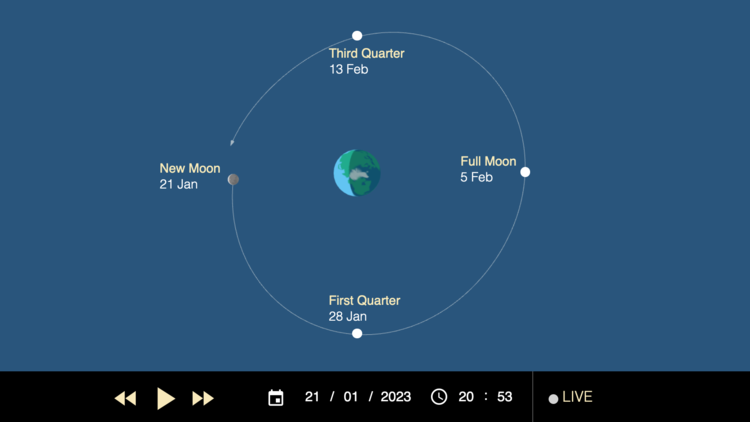
January 21, 2023: Closest New Moon Since the Middle Ages
Find out why the New Moon of January 2023 will be the closest New Moon to Earth in a period of 1337 years.www.timeanddate.com
—
Their wedding must have been out of this world.
Edwin “Buzz” Aldrin, who became the second person to ever set foot on the moon in 1969, following crewmate Neil Armstrong, married his “longtime love” on his 93rd birthday on Friday.

Retired astronaut Buzz Aldrin marries 'longtime love' on his 93rd birthday | CNN
Their wedding must have been out of this world.www.cnn.com

Love Numbers
The Love numbers (h, k, and l) are dimensionless parameters that measure the rigidity of a planetary body and the susceptibility of its shape to change in response to a tidal potential.
In 1909, Augustus Edward Hough Love introduced the values h and k which characterize the overall elastic response of the Earth to the tides ― Earth tides or body tides.[1] Later, in 1912, Toshi Shida added a third Love number, l, which was needed to obtain a complete overall description of the solid Earth's response to the tides.[2]
Love number - Wikipedia
en.wikipedia.org
The Planetary and Lunar Ephemerides DE430 and DE431
2 asteroids the size of 22 penguins to pass Earth this weekend - NASA
Both asteroids 2023 AT and 2023 AE1 are as much as 22 meters wide, meaning 22 emperor penguins. They won't hit us though – penguins are more likely to.
Both asteroids 2023 AT and 2023 AE1 are as much as 22 meters wide, meaning 22 emperor penguins. They won't hit us though – penguins are more likely to.
Two small asteroids each around the size of 22 emperor penguins stacked nose to toes are set to fly past the Earth this weekend.
The asteroids in question have been designated 2023 AT and 2023 AE1, according to the Center for Near-Earth Object Studies (CNEOS) at NASA's Jet Propulsion Laboratory (JPL).
In addition, as their name implies, both of these asteroids were discovered relatively recently, both of them being discovered and designated by scientists within the first 15 days of the new year.
How big is the asteroid coming toward Earth in 2023?
Both asteroids are rather small, as measured by NASA's estimates, and both are around the same size.
The diameters of both asteroids 2023 AT and 2023 AE1 measure roughly between just under 10 meters at minimum to 22 meters at maximum.
For comparison, consider the emperor penguin, the largest and proudest of the humble penguin species. These Antarctic-native flightless birds measure around 100 centimeters (or one meter) in height as adults. This means that asteroids 2023 AT and 2023 AE1 are each roughly 10-22 emperor penguins in diameter.
It should be noted that emperor penguins are also the heaviest of all penguins, but while we can't weigh the two asteroids, it is safe to say they should weigh at least slightly more than 22 emperor penguins.
The two asteroids do have a slight difference in speed.
The first, asteroid 2023 AT, which is set to pass by the Earth on Friday, January 20, is the faster of the two, which clocks in at around 7.23 kilometers per second, or 26,028 kilometers per hour.
Emperor penguins have an average swimming speed between six to nine kilometers per hour. This means that, at best, asteroid 2023 AT is barreling through space at a speed that's around 2,892 times faster than the swim speed of an emperor penguin.
The second asteroid, 2023 AE1, which is set to pass the Earth on Sunday, January 22, is a bit slower, flying at just 5.54 kilometers per second, or 19,944 kilometers per hour – meaning it's just 2,216 times faster than an emperor penguin.
Another thing to note is that both asteroids will come amid Penguin Awareness Day, which is observed at some zoos on January 21.
Will an asteroid hit the Earth in 2023?
Penguins are often a big hit at zoos and in successful movies like Happy Feet, and are generally a big hit with people all around.
However, asteroid impacts are not such big hits – aside from hit meaning impact. But luckily, neither asteroid will hit the Earth – and even if it did, it would likely cause little to no damage, to the extent that an actual emperor penguin may pose a bigger danger to you than these asteroids.
Asteroid 2023 AE1 is set to make the closest flyby out of the two this weekend, with NASA estimating that it will pass just a little under 1.5 million kilometers away from the Earth.
On a cosmic scale, this is a bit close. Sure, it isn't as close as the Moon, which orbits the Earth at an average distance of 384,000 kilometers. But it is close enough to be comparable to NASA's James Webb Space Telescope, which also is a similar distance away.
But that aside, these asteroids would be basically harmless should they actually impact into the Earth.
According to research from the Davidson Institute of Science, the educational arm of Israel's Weizmann Institute of Science, an asteroid 140 meters in diameter or more would release an amount of energy at least a thousand times greater than that released by the first atomic bomb if it impacted Earth.
An even larger asteroid that's over 300 meters wide – like the Apophis asteroid – could destroy an entire continent. An asteroid over a kilometer in width – like asteroid 138971 (2001 CB21), which passed the Earth in early March 2022 – could trigger a worldwide cataclysm.
Small asteroids like 2023 AT and 2023 AE1 wouldn't make it past the atmosphere before burning up, leaving behind little to no fragments.
Don't believe me? Consider the very real and very recent asteroid impacts that actually did happen just last year.
Back in March 2022, a small asteroid around half the size of a giraffe known as 2022 EB5 hit the Earth just hours after its discovery. But given how small it was, it didn't exactly result in any damage.
More recently, in late November 2022, tiny asteroid 2022 WJ1 harmlessly exploded into fragments that scattered around Lake Ontario. NASA had predicted that this small meter-long asteroid would impact this location and knew there wouldn't be any harm from it.
In fact, rather than an asteroid, you are far more likely to be struck and hurt by a projectile thrown by penguins – since these aquatic waterfowl tend to defecate by firing their waste out their rectums at speeds that some scientists have estimated as reaching as high as 2 meters per second.
When is the next asteroid predicted to hit the Earth?
Not for a very, very long time, at least in terms of apocalyptic-level collisions.
NASA has checked the numbers. According to them, Earth, and its emperor penguin population, is safe from any catastrophic asteroid impacts for the next century, meaning no asteroid-induced Armageddon is on its way.
Which asteroid could potentially hit Earth?
At this moment, scientists don't know for sure. However, there are a few candidates for the most dangerous asteroid for the planet.
One of the most dangerous asteroids at the time of writing is the gigantic 500-meter-wide asteroid Bennu, which has an orbit that can cross with Earth's own.
If this asteroid impacted the Earth, the result would be catastrophic – but as far as NASA is aware, this won't be for a long time, if ever
Do we have any way to stop an asteroid from hitting the Earth?
We just might, thanks to the hard work of scientists around the world. And no, it doesn't involve emperor penguins.
The field of planetary defense is specifically organized to find ways of keeping the Earth safe from asteroids and scientists at NASA and across the globe are hard at work trying to do just that.
Most notably, this has involved pioneering the exciting technique of asteroid deflection, which uses kinetic energy through vehicular collision to ever so slightly change an asteroid's orbital path, meaning it would, in theory, no longer be set to crash into Earth but instead fly past it.
In layman's terms, NASA decided to make a spacecraft punch an asteroid to make it move out of the way.
In fact, that is exactly what recently happened in September in NASA's landmark Double Asteroid Redirection Test (DART) Mission, which tested out this theory on a faraway asteroid Dimorphous in the Didymous system.
And according to the results, the DART Mission was a success, managing to alter the asteroid's orbit.
And NASA isn't alone in this either. China is also getting ready to test out its own asteroid deflection mission, set to launch in 2025.
And with scientists discovering more asteroids and getting a better picture of our many rocky neighbors in space – such as the asteroid that recently photobombed the Hubble Space Telescope – further advances should keep coming.
All in all, it seems that humanity is working on building the arsenal it needs to tame the asteroid menace lying in space, the final frontier.
Oklahoma
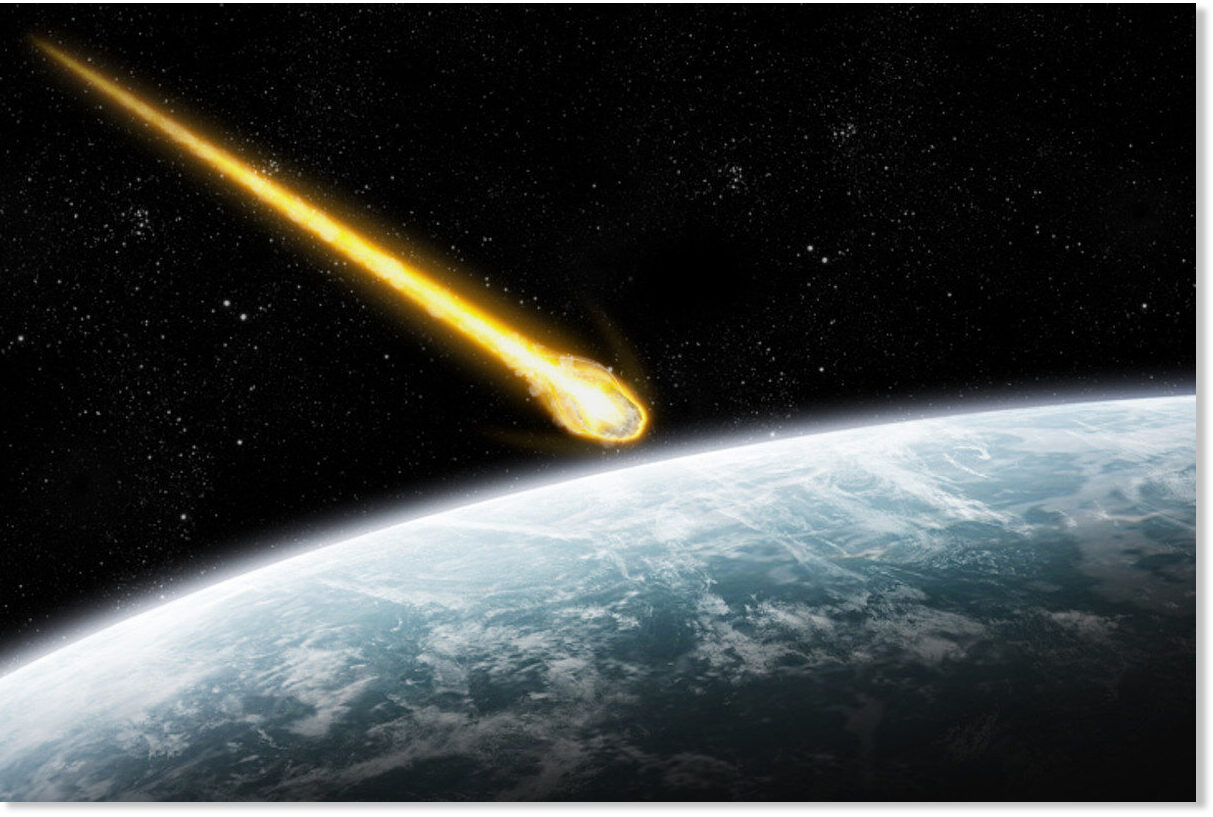
Meteor fireball over Oklahoma and over states on January 20 -- Sott.net
We received 81 reports about a fireball seen over AR, KS, MO, MS, OK and TX on Friday, January 20th 2023 around 09:37 UT. For this event, we received 7 videos.
The same event from above:
AMS event #374-2023 caught from Broken Arrow US Texas
Scott S. Sheppard - extreme_objects
The Search for Planet X/Planet 9 in the Outer Solar System Discovers New Distant Objects
In 2014, Sheppard and Trujillo announced the discovery of "2012 VP113 (nicknamed "Biden)", which has the most distant known orbit in our Solar System. At this time, Sheppard and Trujillo also noticed that the handful of known extreme trans-Neptunian objects all cluster with similar orbital angles. This lead them to predict that there is a planet at more than 200 times our distance from the Sun, whose mass ranging in possibility from several Earths to a Neptune equivalent is shepherding these smaller objects into similar types of orbits.
Some have called this Planet X or Planet 9. Further work since 2014 showed that this massive ninth planet likely exists by further constraining its possible properties. Analysis of "neighboring" small body orbits suggests that it is several times more massive than the Earth, possibly as much as 15 times more so, and at the closest point of its extremely stretched, oblong orbit it is at least 200 times farther away from the Sun than Earth. (This is over 5 times more distant than Pluto.)
A fascinating discussion by the British Astronomical Association on Meteor Reflections from Anchorage Alaska (which also includes observations from HARRP). Bell ringer comment on comet dust evaluations.
Two Meteor Talks
RAG Zoom Programme - 2023 RAG Zoom 06 Jan 2023 HF Meteor Trail Reflections Observed at Anchorage, Alaska USA Whitham D. Reeve, Anchorage, Alaska USA UK observations using the new 6m beacon - update and phase 2 Brian Coleman, Meteor Beacon lead
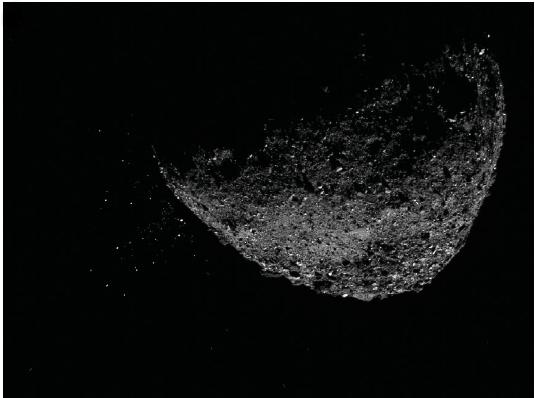
Next Five Asteroid Approaches
NASA's Jet Propulsion Laboratory, the leading center for robotic exploration of the solar system.
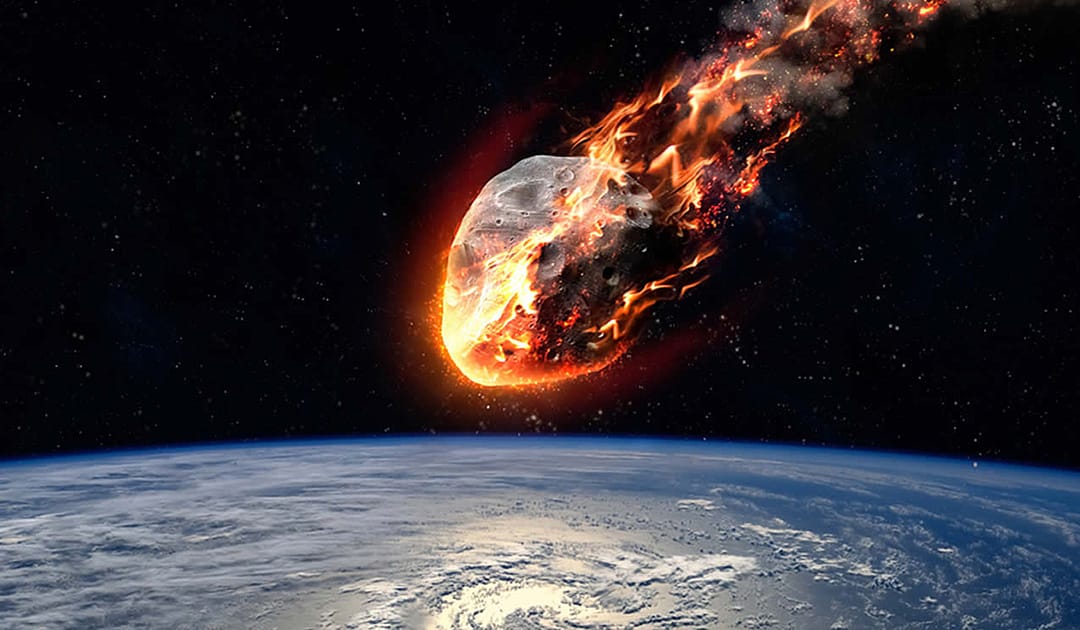
250 million years ago a meteorite hit Antarctica
A team of researchers has discovered a huge impact crater in Antarctica with the help of satellites. This could be the largest meteorite crater on Earth.
Observing Comet C/2022 E3 (ZTF)
Here is a map with the trajectory during the last half of January. It will be easier to observe in the Northern Hemisphere, where the stellar constellations of Draco the Big Dipper and the Little Dipper are more easily visible.
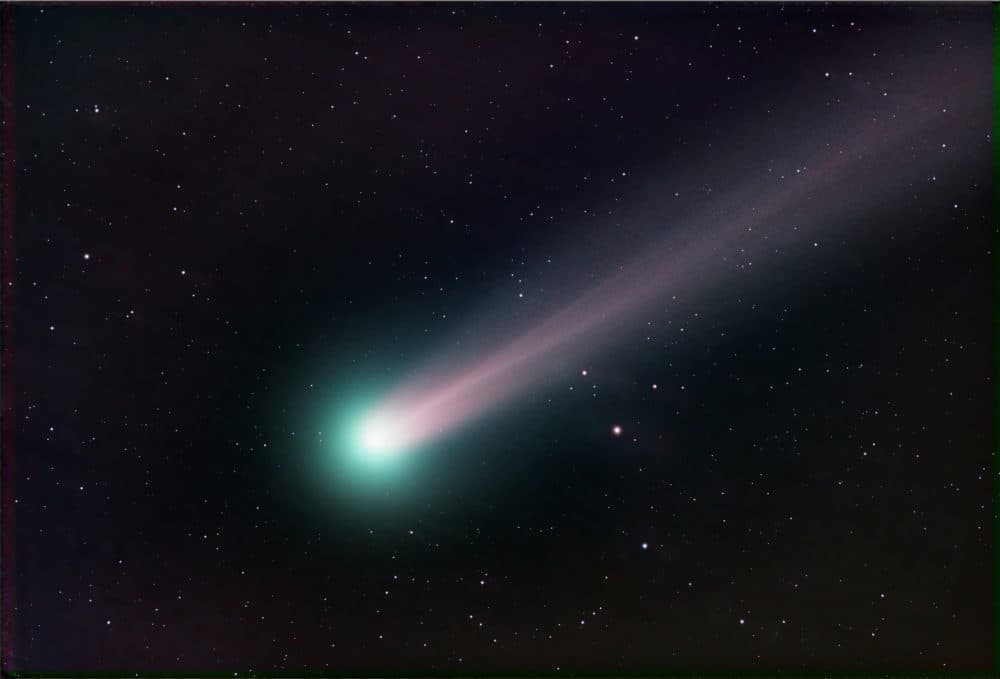
 www.wbur.org
www.wbur.org
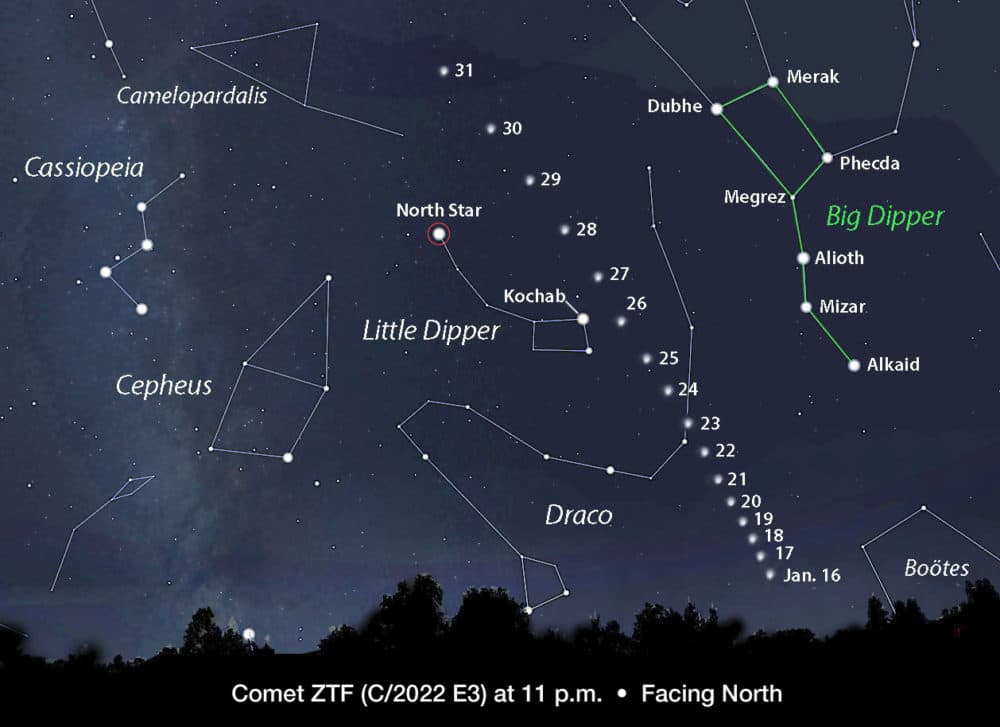
This page from In-The-Sky.org lists Comet ZTF and other comets, while this page gives the orbit of Comet ZTF though the inner solar system as a 3D animation.
Here is a map with the trajectory during the last half of January. It will be easier to observe in the Northern Hemisphere, where the stellar constellations of Draco the Big Dipper and the Little Dipper are more easily visible.

How to see a bright green comet soar across the night sky
A bright green comet is streaking across the sky right now. And it's bright enough that you may be able to see it with the naked eye on a dark night.

This page from In-The-Sky.org lists Comet ZTF and other comets, while this page gives the orbit of Comet ZTF though the inner solar system as a 3D animation.
AMS event #374-2023 caught from Pettigrew US
Jan 27, 2023
Oklahoma

IMPRESSIVE ALPHA GEMINID #SPMN260123 RECORDED TODAY FLYING OVER THE ATLANTIC AT 0h33m18s TUC. This is how Ramón López @StargazerLzt captured it from Playa Blanca, Yaiza in #Lanzarote . Go to the updated list of big cars: http://spmn.uji.es/ESP/SPMNlist.h

Oklahoma
IMPRESSIVE ALPHA GEMINID #SPMN260123 RECORDED TODAY FLYING OVER THE ATLANTIC AT 0h33m18s TUC. This is how Ramón López @StargazerLzt captured it from Playa Blanca, Yaiza in #Lanzarote . Go to the updated list of big cars: http://spmn.uji.es/ESP/SPMNlist.h
XPan
The Living Force
Comet C/2022 E3 ZTF
Some really nice images i gathered from Spaceweather.com - albeit more impressive when you view it larger.


Taken by Petr Horálek/Institute of Physics in Opava on January 26, 2023 @ Popradské Pleso, Slovakia
original link

And here - like WOW - taken by Dario Giannobile on January 24, 2023 @ Mount Etna
Some really nice images i gathered from Spaceweather.com - albeit more impressive when you view it larger.
Taken by Petr Horálek/Institute of Physics in Opava on January 26, 2023 @ Popradské Pleso, Slovakia
original link
Comet ZTF And Dippers
spaceweathergallery2.com
And here - like WOW - taken by Dario Giannobile on January 24, 2023 @ Mount Etna
He wrote following:
Original Link
Comet 2022E3 Above Mount Etna
spaceweathergallery2.com
Comet 2022 E3 above snowy Mount Etna
Perhaps it is not wrong to say that comets are the most fascinating objects in the sky. Although in the past they have been interpreted as signs that heralded possible misfortune, today we know that they are objects mainly made up of ice, dust and rocks.
It was Giotto who give us a different image by frescoing a comet in the Adoration of the Magi in the Scrovegni chapel in 1303. Since then, this representation has remained imprinted in the collective memory to the point of identifying the guiding star of the magi with the star known as the "comet". several elements contribute to the fascination of these objects: certainly the rarity with which comets appear in the sky, their difficulty in being seen with the naked eye but above all the beauty of the tail and the crown when they manage to be observed among the infinite stars of the firmament Today we are lucky enough to be able to witness the spectacle of comet 2022 E3 (ZTF) which is located near the north celestial pole.
It is not easy to admire it but it is enough to have binoculars and a little patience that it will be possible to distinguish the glow of its hair and its tail. Animated by the desire to photograph it, I took advantage of the only night with clear skies that occurred in this last ten days of January. My destination? Snowy Etna!
Although it was not difficult to reach the position from which to resume the comet, the atmospheric conditions were certainly prohibitive. During the night the temperature dropped to -8°C at an altitude of 2000 m, an exceptionally cold temperature for Sicily!
However, the landscape was breathtaking: an expanse of soft snow disturbed only by some fox and rabbit footprints. The branches of the trees bent under the weight of the snow but, above all, the South East crater was completely covered in snow. Its view is breathtaking, expressing, in a single image, a feeling of strength and delicacy. Looking at it, it is possible to see its internal walls through the fracture that caused part of the conical building to collapse.
Some hot spots appear in the dark: they are fumaroles from which volcanic vapors come out... and in all this, the beauty of the sky with the splendid comet rising from the side of the volcano. It shines thanks to a beautiful turquoise green crown and is embellished with a long tail and a small anticoda and hundreds of stars that act as a probe in the sky.
Technical info: Canon 6D, Sigma 150-600 mm, f/7.1, Landscape: 2 shots, iso 320, 180 sec Sky: 27 tracked shots, iso 3200, 45 sec, total integration time: 1215 sec, Fornax Mount Lighttrack II + flat field + dark flat field + dark frame Location: Piano Vetore
METEOR? CHINESE BALLOON?
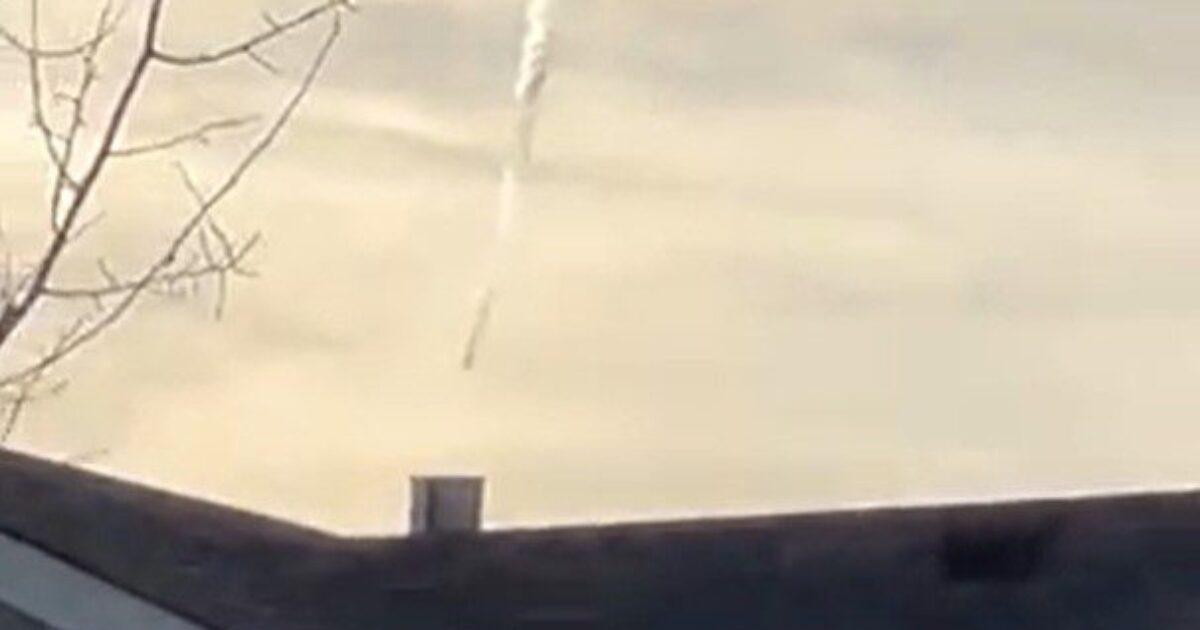
 www.thegatewaypundit.com
www.thegatewaypundit.com
MASSIVE EXPLOSION Over Billings, Montana – Military Helicopters Have Been Activated

Montana Governor and Emergency Services Confirm: NO EXPLOSIONS Occurred In or Around Billings, Montana on Friday Night | The Gateway Pundit | by Jim Hoft
UPDATE — The City of Billings, Governor Gianforte, and the Montana Department of Emergency Services confirmed on Friday night that there was no explosion in or around Billings, Montana.
SubnetUnMask
Jedi
Just saw this posted on Patriots.win. Look in the comments and you'll see major media outlets requesting permission to use this video. It looks like a meteor streaking through the atmosphere and finally breaking up. Didn't the C's say that PTB would try to cover up what was happening with regards to the meteor cloud we're going through? From the large response and traction this is getting, I'm guessing this will get spun - but as what?METEOR? CHINESE BALLOON?
MASSIVE EXPLOSION Over Billings, Montana – Military Helicopters Have Been Activated

Montana Governor and Emergency Services Confirm: NO EXPLOSIONS Occurred In or Around Billings, Montana on Friday Night | The Gateway Pundit | by Jim Hoft
UPDATE — The City of Billings, Governor Gianforte, and the Montana Department of Emergency Services confirmed on Friday night that there was no explosion in or around Billings, Montana.www.thegatewaypundit.com
SubnetUnMask
Jedi
My Spidey Sense (TM) is telling me there's a 75% chance the PTB will use this explosion/trail in Montana as a way to increase tensions with China.
Just saw this posted on Patriots.win. Look in the comments and you'll see major media outlets requesting permission to use this video. It looks like a meteor streaking through the atmosphere and finally breaking up. Didn't the C's say that PTB would try to cover up what was happening with regards to the meteor cloud we're going through? From the large response and traction this is getting, I'm guessing this will get spun - but as what?
I think you mean this
A: Indeed and did you notice that feeble cover-up? They are getting desperate.
Q: (L) Yes, we noticed that feeble cover-up. Speaking of fireballs, there was an article that Kniall put together about this supposed comet/missile launch. We're just kind of a little bit curious about that because there was a lot of weird stuff going on around that.
A: You should remember what we told you years ago about "chemtrails" in relation to MIC activity, that it was fully known that the real enemy was "out there" not "over there." Don't discard what Clube said about this matter so easily. You should be aware that there are swarms of missiles ready and waiting to be launched at the order of the military sky watchers so as to mask what is going on. In this case and even others there was both: A comet explosion followed by a missile launch to keep the masses calm. Can't have the PTB looking like they are angering "the gods", ya know!!!
Q: (Perceval) So basically what we were thinking. (L) So in other words what you're suggesting is that there is a network of missiles around the planet belonging to various different countries. At any given time, somebody can give the order for somebody in the right place to launch a missile to cover up the fact that there are comets. Is that it?
A: Yes precisely. You need military activity to mask celestial events. And so it has always been.
It is also strange that before this explosion the Pentagon started talking about the Chinese balloon.
